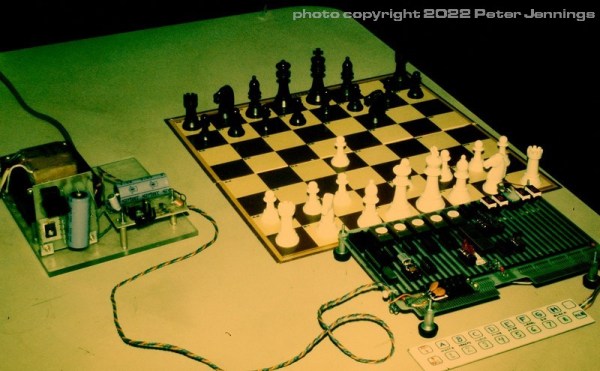The Commodore CHESSmate chess computer might not be terribly well known, but that doesn’t make it any less worthy of being reproduced. If anything it is more important, as it gives more people an opportunity to use one of these devices, yet beyond a purely emulated experience the real user interface is harder to experience.
This is where [Michael Gardi]’s modernized replica provides a highly accessible version, consisting of a custom PCB with an ESP32 as the brains of the system. Although decidedly overkill next to the 6502 in the original CHESSmate, it makes the project far easier for others to assemble as it contains few components that shouldn’t be readily available.
The ESP32 is mounted on a small daughterboard which plugs into the main PCB with the buttons, LEDs and indicators. The whole stack is then inserted into the 3D printed reproduction case. These 3D models along with the ESP32 port of the CHESSmate firmware can be found in the GitHub repository, along with a minimalist frame and a ‘CHESSmate Lite’ version as alternative enclosure options for those who somehow don’t appreciate the delightful 1980s aesthetics.
We covered the Commodore CHESSmate last year, including a highly faithful reproduction built by [Hans Otten], which [Michael] read the day after meeting [Peter Jennings], the author of MicroChess (which the CHESSmate uses internally) at an event at York University. Taking this as a sign, he set to work on this particular project.
We’re not sure if there’s really a cosmic force directing [Michael] towards his next project, but if there is, we’d like to take this opportunity to thank it for doing a fantastic job so far.














